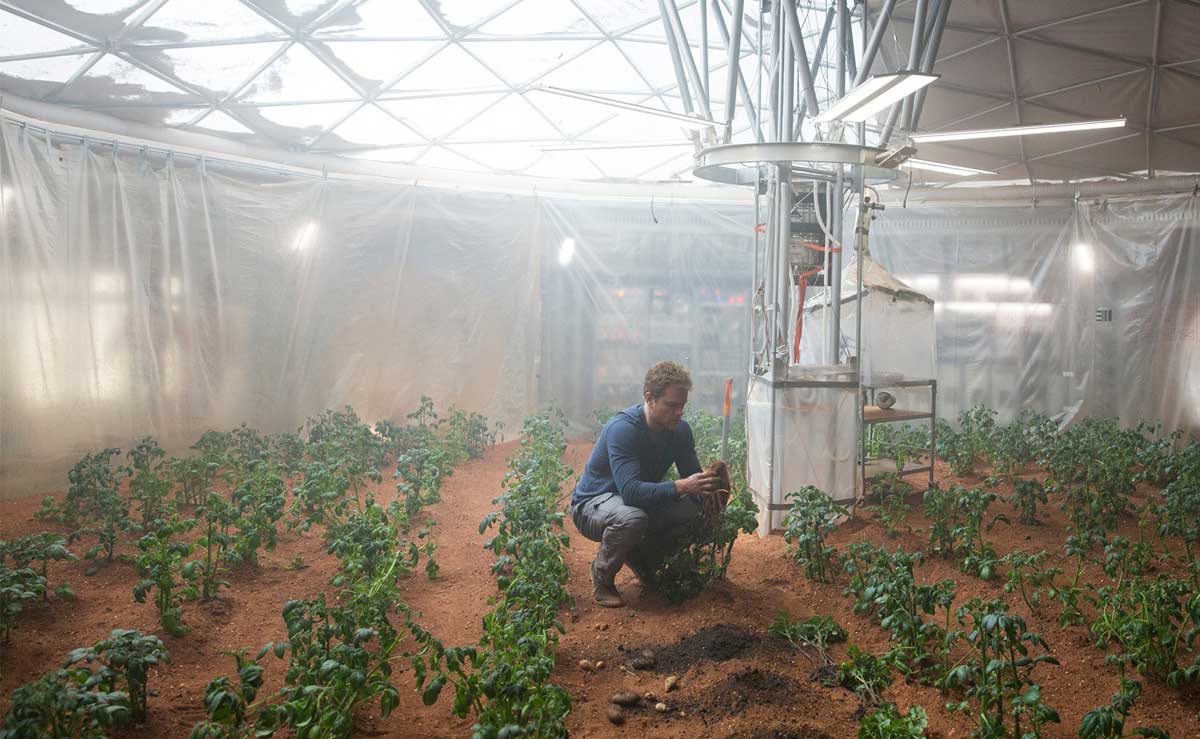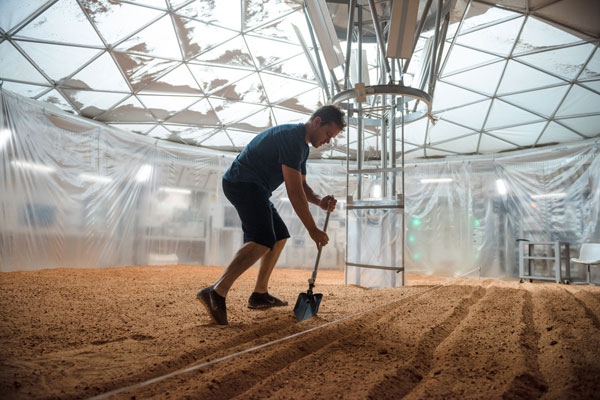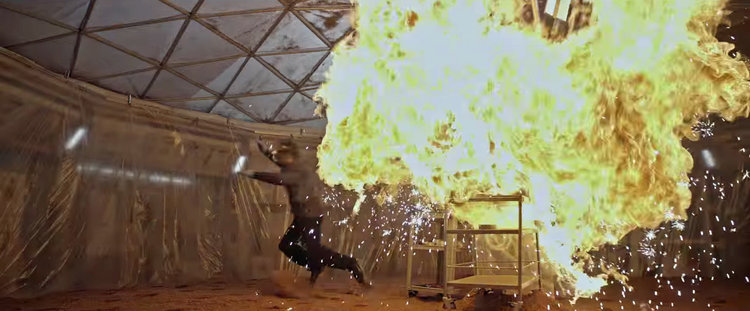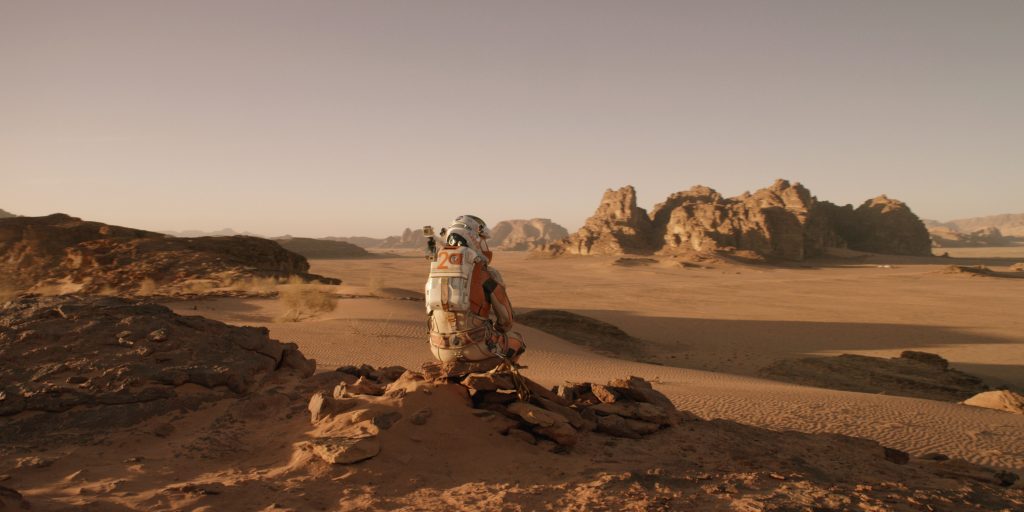Farming or Fiction? Growing potatoes on Mars…
5th December 2018
As we mark the significance of healthy farming environments on World Soil Day, our agricultural curiosity takes us across the solar system to places that are rich with untouched soil.
As we mark the significance of healthy farming environments on World Soil Day, our agricultural curiosity takes us across the solar system to places that are rich with untouched soil. Mars to be exact.
The 2015 award-winning blockbuster film, The Martian, saw Matt Damon growing food on Mars after he is left for dead following a storm. With only a meagre amount of supplies, botanist Mark Watney (Damon) immediately starts constructing a farm inside the man-made habitat. Utilising Martian soil fertilised with human faeces and water produced by extracting hydrogen from leftover rocket fuel, his potato farm flourishes.
But artistic liberties aside, how successful would Watney’s Martian farm actually be?
Farming Fact: Soil, Water, Gravity, Weather.
Soil
Martian soil would, as in the story, be suitable for growing crops. Essential plant macronutrients (oxygen, carbon, hydrogen, nitrogen, potassium, phosphorus, calcium, magnesium, sulphur) and micronutrients (iron, manganese, zinc, copper, molybdenum, boron, chlorine) detected in Martian soil would actually nurture plants more effectively than the soil here on Earth – as recent tests have proved. As long as they are cultivated in a temperature controlled environment (like Watneys), growing plants on the Martian surface is entirely possible. Also, the use of stored human waste as fertiliser would add to the success of the crop growth – even if the process of sowing was ghastly.
Water
Matt Damon’s character took hydrazine from the rocket fuel and dissociated it into nitrogen and hydrogen, which is entirely possible, and he burned the hydrogen with oxygen to make water. Even though the science is correct, water is actually available in its natural state on Mars as ice, permafrost, or soaked into the soil. Martian soil is about 5% water by weight at low latitude, and up to 60% water near the poles – it would have been easier to extract it from the ground than a dangerous chemical reaction. Just a thought Matt!
Gravity
The plant hormone auxin accumulates in the lower side of both roots and stems, leading to plant growth through cell elongation – or gravitropism (the growth response to gravity). Following two separate experiments in the International Space Station, NASA found normal distribution of auxin within the roots of space-grown plants, suggesting weightlessness does not affect plant hormones – or in this case, Mars’ one third of Earth’s gravitational pull.
Weather
The Martian atmosphere is only 1% as dense as Earth’s, so a Mars wind of 100mph, which is possible although quite rare on the surface, would only have the same dynamic force as a 10mph wind on Earth. The storm that left Watney to cultivate his farm could never have occurred, but would assist in the peaceful growth of a Martian farm.
Farming Fiction: Radiation, Oxygen.
Radiation
On a plant leaf, if there is too much evaporation due to intense radiation, the stomata closes to reserve water. If the stomata is unable to open for a long period of time, the growth of the plant is stunted and prolonged periods of radiation can completely damage the stomata and destroy the plant. Along with his potatoes, Watney spends more than 500 sols (or Martian days, which are only 39 minutes longer than our days) exposed to an array of solar energy particles and galactic cosmic rays on the surface of Mars. That’s more than 40 times the annual permissible dosage for workers in nuclear power plants. Artificial magnetic fields or insulating layers of aluminium may shield Watney’s farm from a small percentage of radiation – but not the majority of it.
Oxygen
Could a Martian castaway have all of the oxygen he/she would need to breath and grow a potato farm? The answer is, probably not. The six person crew was supposed to remain on the surface for 30 days, meaning that a single person would have at least enough air for 180 days (as NASA typically builds in very comfortable reserves). In this case NASA would have to provide three times the oxygen the crew would have needed —which is what it would take to keep Watney and his potatoes alive for 500-plus sols—and that is very doubtful.
To summarize, it is entirely possible to grow a rogue potato farm on the surface of Mars, IF radiation threats are eliminated and a large quantity of oxygen can be guaranteed – with limited crew to breath/eat it.
The Martian = More Fact than Fiction.
Nasa talks about sending humans to Mars in 2043, but for now – here on Earth – please keep World Soil Day in mind for a brighter ecological future.
(Images from 20th Century Fox)





